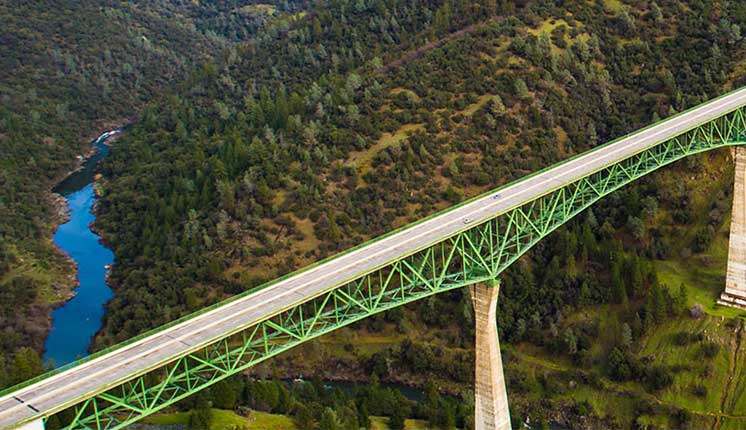
California’s State and local transportation infrastructure is a complex system of interstate and intrastate highways, freeways, and city and county-maintained streets and roads. California’s rural transportation system serves to connect rural and remote communities to employment and population centers, health care and social services, and educational opportunities, and provides the general public access to many of California’s recreational opportunities and tourist attractions – two key economic drivers for rural counties.
Rural transportation systems remain woefully underfunded. State and federal transportation funding has been in a steady decline, while the need for basic maintenance and upkeep only continues to grow.
In general, the excise taxes and fees on gasoline and diesel fuel serve as the foundation for funding road maintenance and construction at the state and local levels. Also, fees derived from vehicle registrations are placed in the Motor Vehicle Account and help fund the activities of the Department of Motor Vehicles and the California Highway Patrol. Finally, truck weight fees are currently used to satisfy General Fund debt associated with Proposition 1B, the transportation bond proposal enacted in 2006.
In March 2017, the Legislature and Governor Jerry Brown enacted a transportation financial package (Senate Bill 1) to provide the resources for helping maintain the existing road and highway infrastructure. The package is based largely on increasing taxes on motor fuels (gasoline and diesel) and indexing them in future years. In addition, additional levies are made at the time of a vehicle’s annual registration as well as a new levy on electric vehicles.
More than 60 percent of the proceeds raised directly from SB 1 are to be split evenly between the state and local governments. The annual local government share will be divided equally between cities and counties for local streets and roads under existing distribution formulas.
